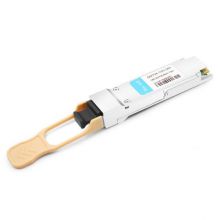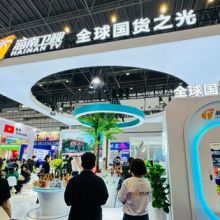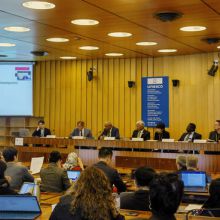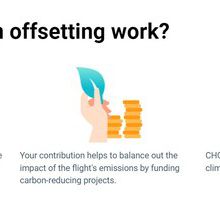
After years of development, 100G applications have formed a variety of technology types and alliances, whether it is the standardized ieee802.3bm or the 100G application model launched by SWDM, MSA and other organizations. There are many kinds of interfaces and application technologies supporting 100G, and each has its own characteristics. For the practical application of the data center, the distance between the connection points of most data centers does not exceed 500 meters. From a large number of 100G interface models, we have selected four types that are most likely to be used in data centers for further analysis for users who need to deploy 100G for reference. 1. 100GBase-SR4 100GBase-SR4 complies with the new standard ieee802.3bm issued in 2015. It uses 4 channels composed of 8-core multimode fiber for parallel transmission. Both multimode OM3 and OM4 optical fibers support 100G applications. The interface adopts 12 core MPO interface. The middle four core optical fiber does not need to be used. Each channel supports 25G. The transmission model is completely consistent with 100GBase-SR4 in ieee802.3ba. The optical transceiver adopts 100G QSFP28 SR4. This model can use conventional OM3 and OM4 multimode optical fibers to support 70m and 100m distances of 100G applications respectively. 2. 100GBase-SWDM4 SWDM (Short Wavelength Division Multiplexing) transmits four wavelength bands of optical signals over a single core of multimode fiber. The principle of WDM is similar to CWDM on single-mode, but SWDM is the first application of WDM technology on the short wavelength band of multimode fiber. It can be referred to the transmission principle model in the following figure: The main transmission window of traditional OM3 and OM4 multimode fiber is defined at 850nm. If SWDM technology is adopted, four windows are required to transmit optical signals, and the four wavebands still use VCSEL vertical cavity surface emitting lasers with high cost performance. In order to improve the overall bandwidth, the bandwidth of the new generation multimode fiber WBMMF(Wideband Multimode Fiber) is increased. In WBMMF, the highest bandwidth performance is around 880nm band, and the highest bandwidth point is higher than that of traditional OM4 multimode fiber. The SWDM technology can also use OM4 optical fiber as the transmission medium, but the transmission distance should be reduced accordingly. Compared with the SR4 model, SWDM4 requires only 25% of the optical fiber.3. 100GBase-PSM4 100GBase-PSM4 adopts single-mode optical fiber parallel transmission mode. Each 100G model adopts 8-core single-mode optical fiber to form four independent channels. The interface adopts 12 core MPO interface, in which the middle 4-core optical fiber of MPO interface is not enabled, and each channel supports 25G. The optical fiber transmission model is similar to 100GBase-SR4. The biggest difference is that PSM4 adopts single-mode optical fiber as the transmission medium and laser light source 1310 window. The optical transceiver also adopts QSFP28, and the connector adopts MTP / MPO single-mode APC. At present, 100GBase PSM4 has not been recognized by IEEE standardization organization, and is mainly promoted by PSM4 MSA alliance. 4. 100GBase-CWDM4 100GBase-CWDM4 is a 100G transmission model based on single-mode coarse wavelength division multiplexing(CWDM) technology. The fiber optic transceiver uses a single-mode laser light source with LC duplex interface, and supports four long wavelength bands of signal transmission on each core fiber, these four emission windows are 1271nm,1291nm,1311nm,1331nm, and each band transmits 25G. 100GBase-CWDM4 model is also used QSFP28 optical transceiver.Compare to traditional single-mode 10KM transceiver with high cost, the 2KM QSFP28 100G CWDM4 transceiver has a competitive price. 5. Summary Different types of data centers determine different needs. Not all data center users currently have the need to deploy 100G, so what types of users need to deploy 100G networks the most? To answer this question, we can divide data centers into two major categories, IDC (Internet Data Center) and EDC (Enterprise Data Center). Relatively speaking, some IDC data centers have more urgency to deploy 100G backbone networks, such as the data centers of large interconnection companies or carriers or some scaled cloud computing data centers. In terms of current price, although the wiring cost of multi-mode 100G based on SR4 is relatively high, the overall price has certain advantages, especially the price of SR4 optical transceiver is significantly lower than that of other types. Meanwhile, the price of optical transceiver based on CWDM single-mode is significantly higher than that of the other three types. The overall price difference between PSM4 and SWDM is small. As the SWDM alliance participated by a small number of optical transceiver manufacturers, it is not a public technology at present, and the market price remains relatively high temporarily. However, from the perspective of technology and cost composition, there is still a large room for price decline of SWDM, and this product has a certain market potential in the future.
Optical Transceiver QSFP28 100G QSFP28 3072 101 07/29/21RECENT POSTS

TAIPEI, April 19, 2024 /PRNewswire/ -- VIVOTEK (3454-TW), the global leading IP security solution provider, announces that last week's 2024 ISC West trade show in Las Vegas was a tremendous success as it unveiled the 2024 theme Make Tomorrow Easier, Today! to partners, attendees, and the media. Make Analytics Easier, Make Cloud Easier, Make Search Easier, and Make Integration Easier were the core essential components of the 2024 theme, and both the booth staff and visitors were very busy discussing its vision throughout the show. This also demonstrates that VIVOTEK's AI security solutions and cloud-based service VORTEX attracted interests by many customers for their rich versatility in applications. VIVOTEK is thrilled to announce that the ISC WEST exhibition was a resounding success! With an overwhelming turnout and enthusiastic engagement from attendees, VIVOTEK's showcase of cutting-edge AI solutions captivated audiences and left a lasting impression. From innovative AI technologies to groundbreaking product launches, it set the stage for the future of the industry. From the outset, it was clear that this year's ISC West was going to surpass previous editions. There were more engagements, and these engagements lasted longer than the past as attendees and the media were hyper-focused on VORTEX, its new camera solutions, AI integration, re-launch of VIVOTEK Premium Partner Program, additional technology solutions, and the roll-out of the 2024 theme. AI has quickly become a priority in the security industry, and it was a focal point of VIVOTEK's strategy during the show as well. During its many sales and marketing meetings at ISC West, discussions primarily revolved around how to integrate AI into the product lines and software platforms, much to the gratification of its partners who are seeing a quickly growing need for this technology to satisfy their customers' needs. As many of its customers may know by now, VIVOTEK recently entered into an integration partnership with Kisi, a modern cloud-based access control solution based in Brooklyn, New York. This partnership aims to secure physical spaces dedicated to providing a seamless and efficient user experience, making Kisi ideally suited as a VIVOTEK partner. During ISC West, VIVOTEK provided Kisi with a station in the booth to perform demonstrations, which proved to be very popular during the show. Throughout the event, VORTEX remained a central focal point and rapidly gained popularity among partners since its launch. This was evident throughout the show as the VORTEX station was continuously used for strategic demonstrations. As for the theme, attendees commended on how much they liked this year's booth layout, how the message of "Making Tomorrow Easier, Today" was delivered in every stations, how accessible the staff was in meeting with them, and how much they enjoyed the partner reception party. VIVOTEK's commitment to innovation and customer-centric solutions shone brightly at ISC West, as evident in the overwhelmingly positive feedbacks it received from partners, end users, media, and even other exhibit manufacturers. VIVOTEK extends heartfelt thanks to everyone who contributed to making this year's ISC West a tremendous success. We look forward to making next year's ISC West even better!

HAIKOU, China, April 18, 2024 /PRNewswire/ -- The 4th China International Consumer Product Expo (hereinafter referred to as the "Consumer Expo") was held in Haikou from April 13 to April 18, and "The World's Specialty" pavilion carefully built by Hainan TV made its debut. The pavilion has a novel design, rich content and unique characteristics, which caused many onlookers during the exhibition. The overall design of "The World's Specialty" pavilion takes global domestic products as the core element, highlighting the functionality of "communication" and "sharing". Aroma from Thailand, rooibos tea from South Africa, wine from Russia, milk powder from Finland, cashmere sweaters from Mongolia and other products are authentic and have various styles, which aroused great interest of the audience. At this exhibition, "The World's Specialty" specially invited the embassies of Mongolia, Ireland, Thailand, Egypt, Croatia, Argentina, Finland, Indonesia, Mozambique, El Salvador and ten other countries to record videos to help. A dialogue of economy, trade and culture across regions as well as media stopped many visitors at the exhibition site. In order to make the audience better feel the atmosphere of the fourth Consumer Expo, Hainan TV launched three different ways of live streaming. During the period of development, the live streaming area invited a number of influencers and professionals to discuss the Expo and spread it on the network platform; The "slow live streaming" will synchronize the dynamic real-time of the exhibition hall; In addition, the livestreaming tour of the Expo starts from the exhibition hall, and takes the audience to launch a journey of discovery and feel more highlights of the Expo. "The World's Specialty" pavilion also possesses an AI photo-taking area for visitors. Paired with our customized scenes, viewers can leave their own photos. It is worth mentioning that the fourth season of "The World's Specialty" also officially started filming at the scene of the Consumer Expo on April 13. From the perspective of a third party, the program team will participate in the on-site work of the Expo with the Embassy of Ireland----the guest country of the Expo, and the Embassy of Mongolia----the first-time participating country, to show the real experience of the participating countries in a three-dimensional manner. While sharing the treasures and good products of the two countries, the story of cultural exchanges is condensed on fresh products. In a real sense, " The World's Specialty " belongs to Hainan, the whole country and the world. Extending from TV programs to cultural IP, and then entering the high-level professional exhibition, Hainan TV's "The World's Specialty" is not only an exploration of the industrial chain, but also a large survey of consumer preferences. It is believed that in the future, the new way of e-selling goods with the background of global cultural exchanges of "The World's Specialty" will meet users' more expectations for quality consumption.

The second phase will run from 2024 to 2027 in Egypt, Brazil, and Thailand PARIS, April 18, 2024 /PRNewswire/ -- UNESCO and Huawei yesterday launched Phase II of the Technology-Enabled Open Schools for All System (TeOSS) project at the UNESCO Digital Futures of Education Seminar, announcing that the second phase will run from 2024 to 2027 in Brazil, Thailand, and Egypt. The first phase already benefitted thousands of educators in Egypt, Ghana, and Ethiopia. UNESCO, Huawei and TeOSS project country representatives at the UNESCO Digital Futures of Education Seminar Aligned with UN SDG4, TeOSS aims to build more crisis-resilient, inclusive, and future-proof education systems by leveraging technology to provide digital resources, training, and policy support to educators and learners. "In the face of an unprecedented digital transformation, education stands at the forefront, wielding technology not just to broaden access but to redefine the very nature of learning and knowledge for generations to come," said Stefania Giannini, Assistant Director-General for Education, UNESCO. "Thanks to partners like Huawei, we can harness this digital revolution to shape an inclusive, equitable, and human-centered educational future." Open Schools Phase 1 recap TeOSS Phase I ran from 2020-2024 in Egypt, Ethiopia, and Ghana. UNESCO and Huawei supported the three African nations' ministries of education in designing, implementing, and evaluating open school systems in three pilot projects. As part of this process, ministry representatives from the three nations shared progress, best practices, and experience of the first phase at the UNESCO seminar yesterday. "The project aims to address educational challenges by integrating digital learning platforms and digital content that align with the curriculum and digital competencies of teachers. It also seeks to promote open education models through national digital learning policies," said Hegazi Idris, Advisor to the Minister for Literacy and Lifelong Learning, Ministry of Education and Technical Education, Egypt. In Egypt, TeOSS supports 950,000 K-12 educators through the National Distance Learning Centre. In Ghana, TeOSS has enhanced national education platforms for students and educators nationwide. In 10 pilot schools, the project has benefited 1,000 teachers and 3,000 students. In Ethiopia, TeOSS benefits 12,000 students and 250 educators in 24 selected pilot secondary schools. Also at the UNESCO seminar, representatives from Brazil, Thailand, and Egypt discussed key national issues facing education and how Phase II of the TeOSS project can help solve them. "Thailand launched Digital Thailand to achieve digital education through connectivity, content and competences," said Suthep Kaengsanthia, Permanent Secretary for Education, Ministry of Education, Thailand. "Brazil set a target of universal connectivity for educational purposes in all public basic education schools in the country by 2026," said Barbara Bacellar Rodrigues de Godoy, Primary Education Project Management Consultant, Ministry of Education, Brazil. TeOSS is aligned with the education domain of Huawei's digital inclusion initiative TECH4ALL, which aims to leverage technology to drive education equity and quality. "Huawei is fully committed to working with UNESCO, governments, and all stakeholders to develop technology solutions that can enable an inclusive and sustainable digital world," said Liu Mingju, Director of the TECH4ALL Program Office at Huawei.

SINGAPORE, April 18, 2024 /PRNewswire/ -- Hike up the mountains, dive into the sea, or soar into the sky… what better way to take in the glorious beauty of our planet than through travel? However, carbon emissions from transportation, the plastic waste left behind by travellers, and the potential impact on nature also make travel an activity with lasting environmental consequences. This Earth Day, Trip.com Group, a leading global travel service provider, offers 8 tips to travellers who would like to embark on a more sustainable journey. In some cases, just simple actions can make a huge difference. 1. Participate in carbon offset programmes for flights With aviation accounting for at least 2% of global carbon dioxide emissions, we need to consider our carbon footprint when opting to fly to our next destination. Whenever possible, choose to fly direct because take-off and landing use the most jet fuel on every flight. Use tools to track how much carbon emissions your flight emits and select carbon offset options to support projects that reduce, capture, or avoid carbon emissions in an amount equivalent to your carbon footprint. Trip.com has been working with leading climate-tech company CHOOOSE to help travellers support carbon offset projects with just a simple tap. When travellers book a flight on Trip.com, they may see the option to offset carbon for a small cost. In 2023, this contribution went directly to four climate-protecting initiatives around the world: building and operating two waste-to-energy facilities in Turkey, disseminating improved, high-efficiency cook-stoves in households in India, protecting and enhancing pristine mangrove forests in Cambodia, and monitoring and protecting the ecosystem for a forest in Brazil. 2. Consider train travel as an alternative On average, trains are one of the most energy-efficient means of transportation, making them an eco-friendly travel choice. Train travel can also be relaxing and enjoyable, allowing you to take in the scenery and avoid the stress of navigating busy airports or unfamiliar road conditions. So, the next time you are planning a trip, check if there is a train route that suits your needs. If you are travelling in the United Kingdom and booking train tickets through Trip.com, you can track how much carbon footprint you have reduced through train travel by checking your carbon credits on the Trip.com app. Furthermore, you may celebrate your achievements by planting virtual trees. With a choice to plant trees such as rowans, sessile oaks, silver birches, and more, you can take pride in watching your tiny virtual saplings turn into vibrant forests through your green efforts. 3. Rent electric cars rather than gasoline vehicles Road trips offer an autonomous and immersive experience when travelling. There's nothing like driving through local landscapes on your own time, taking breaks or detours whenever you feel like it, and enjoying the company of your travel partners or the freedom of driving alone. Choosing electric vehicles over gasoline ones also allows you to take carbon reduction into your own hands – while the building and charging processes still emit carbon, fully electric vehicles produce zero tailpipe emissions and reduce air pollution. With the increasing availability of charging stations, it has become more convenient to charge electric cars on the go. At Trip.com, you can see the electric cars clearly labelled when you search for car rental options. This provides greater clarity and allows you to choose the more environmentally friendly option. 4. Bring your own toiletries and avoid single-use items Plastic production has grown to more than 380 million tons per year. Microplastics, in particular, have become yet another permanent and pervasive human imprint on the environment, presenting a grave threat to the health of humans as well as other species. This year, "Planet vs. Plastics" is chosen as the theme for Earth Day, which commits to a 60% reduction in the production of plastics by 2040. Bringing your own toiletries instead of relying on single-use items is one of the key sustainability tips suggested by TripGenie, Trip.com's AI travel assistant. Without taking up too much space in luggage, this simple action can go a long way in reducing waste. More and more hotels are now encouraging travellers to bring reusable items as they strive to promote sustainable practices and minimise their own environmental impact. 5. Support local communities and empower best practices Getting to know local communities can often provide insights into how people interact with their environments. Stay at locally-owned accommodations, eat at local restaurants, and purchase goods from local artisans, and your immersive travel experience will also contribute to economic growth. Responsible practices, such as respecting local customs, conserving natural resources, and supporting environmental initiatives, further help preserve the cultural heritage and natural beauty of the destination. Across China, Trip.com Group has established 29 country retreats in rural areas, all with the aim to create economic opportunities and inspire travellers to build a new relationship with nature. This initiative has led to the creation of tens of thousands of jobs, not only in direct employment but also in nearby homestays and relevant industries. Trip.com Group has also been implementing low-carbon practices in these country retreats – for example, installing solar panels, charging stations, and an integrated circular wastewater treatment system in the Anhui Jinzhai Country Retreat in eastern China. 6. Head to hidden gems and prevent over-tourism Overtourism, which refers to too many tourists going to a particular destination, can strain local resources, damage fragile ecosystems, and disrupt the lives of residents. By checking out lesser-known destinations and off-the-beaten-path attractions, travellers can help alleviate the burden on tourist hotspots, thus mitigating overtourism. This approach allows for a more authentic travel experience and contributes to a more balanced tourism industry. When planning your itinerary, you may try using TripGenie, Trip.com's built-in AI travel assistant, for advice about hidden gems in your dream destination. You may also draw inspiration from AI-enhanced curated lists like Trip.Best and Trip.Trends, which combine real-time user preference data with expert curation, for nature attractions, local eats, and top-notch hotels, among others. 7. Limit carbon emissions in business travel Environmental awareness should not be limited to personal travel. As face-to-face business meetings return after the pandemic, corporate travel has again contributed to global carbon emissions. More and more companies today are keen to reduce their environmental footprint by holding video conferences, creating carbon budgets for business travel, and encouraging employees to opt for low-carbon practices. To help businesses achieve their sustainability goals, Trip.Biz, the digital travel management company powered by Trip.com Group, has been implementing and continuously developing advanced features such as carbon emission display, tracking, carbon budgeting and restrictions, and the creation of customised carbon accounts based on clients' specific requirements. It also presents users with carbon emission data for each available flight option, and the post-trip management report and individual travel history further aid companies in refining and elevating their sustainable travel policies. 8. Share your love for nature with others Your trip doesn't have to end when you get home. By showcasing the beauty of the places you visit, you can inspire others to appreciate and protect these destinations. However, it is crucial to be mindful of the impact of your posts. Avoid geotagging sensitive locations, respect wildlife by maintaining a safe distance, and encourage responsible behaviour in your captions. To reach a dynamic community of travel enthusiasts just like yourself, you may tell your stories through Trip Moments on Trip.com. In addition to sharing your favourite snapshots from your trip, you may also jot down memorable encounters, offer travel advice, and participate in various seasonal campaigns that reward content generators with perks like limited stickers and even Trip Coins that can be used towards your next order. As globetrotters, we hold the power to shape the future of travel. By embracing sustainable travel, we are safeguarding the beauty of our planet for the next generations to explore and cherish. Whether it is reconsidering transportation options, packing reusable and recyclable items, or spreading the word to others, our actions can help ensure that the wonders we witness today will endure. About Trip.com Group Trip.com Group is a leading global travel service provider comprising of Trip.com, Ctrip, Skyscanner, and Qunar. Across its platforms, Trip.com Group helps travellers around the world make informed and cost-effective bookings for travel products and services and enables partners to connect their offerings with users through the aggregation of comprehensive travel-related content and resources, and an advanced transaction platform consisting of apps, websites and 24/7 customer service centres. Founded in 1999 and listed on NASDAQ in 2003 and HKEX in 2021, Trip.com Group has become one of the best-known travel groups in the world, with the mission "to pursue the perfect trip for a better world". Find out more about Trip.com Group here: group.trip.com. Follow us on: X, Facebook, LinkedIn, and YouTube.

